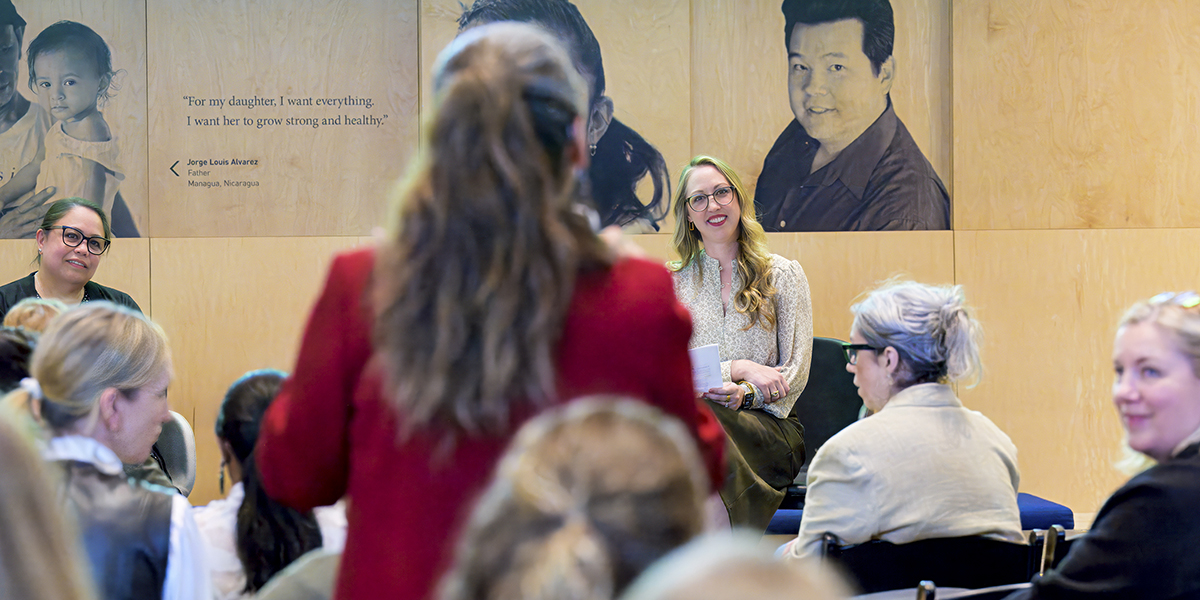The Many Ways to Define the Workers Who Compose a Blended Workforce (and how your organization can benefit)
At Lions & Tigers, we champion the concept of a “blended workforce,” educating our clients on its benefits and guiding them to harness this approach for a competitive advantage in today’s market. A blended workforce refers to a team composed of full-time, permanent employees working alongside non-employees for set periods to achieve specific goals. These supplemental workers might join temporarily to cover parental leave or bring specialized expertise to a particular project.
To help clients develop the most effective blended workforces, Lions & Tigers employs a strategy called Highest & Best Use to build high-performing teams. This approach focuses on aligning team members’ unique skills and motivations with the organization’s goals, creating a system where each individual’s potential is fully realized and leveraged for maximum impact. While the term “blended workforce” is a succinct way to describe these setups, you might encounter related and alternative terms.
For example, some organizations and employment professionals use terms like “fractional” or “contingent” to describe supplemental, time-limited workers, among many others. Let’s review some of the other terms and phrases you might see that describe aspects of these unique work team arrangements.
Fractional workers are experts who have the skills of full-time employees, but who work in reduced capacities and receive pay commensurate with their dedication or outcomes. Employers who need experts in different areas, but not on a full-time basis can greatly benefit from a fractional workforce. Lions & Tigers often partners with organizations with complex staffing needs like maternity backfill through a fractional approach — read more here about how we facilitate arrangements where part-time experts work in tandem with one another in complementary, but distinct, roles.
Consultants typically serve in advisory roles, drawing on in-depth knowledge in a particular subject matter or in a broader capacity. Consultants are sometimes brought in when a project has stalled or when a team is facing issues with productivity or undergoing substantial changes. Lions & Tigers connects organizations with consultants from diverse, deep backgrounds and experience working with leading companies like Microsoft — at a fraction of the cost of full-time hires with this level of expertise.
Advisors and Coaches provide expertise to teams on a retainer basis for short periods. These high-level experts can have an outsized impact on project outcomes relative to their small time commitments.
Contract workers, also known as independent or freelance contractors, are often brought on by an organization on a per project basis. These workers manage their own taxes and issue invoices to organizations according to an agreed-upon payment arrangement. Lions & Tiger’s use of independent workers is strategic and seamless for clients when blended with other workers.
Vendors, also known as suppliers, in the context of blended workforces, are agencies that connect organizations with fractional workers, consultants, and other professionals. Brands may choose to outsource a project, an entire team, or to use vendors to deliver ongoing services tied to specific business outcomes.
Temp – workers who contract with organizations on a temporary basis, including timeframes as short as a single day, often through arrangements made with staffing agencies. Today, these workers, who are often more suited for general office roles versus higher-level consultants and fractional workers, are often referred to with terms like interim or on-call workers. Temp-to-hire arrangements allow organizations to evaluate potential full-time employees working in roles ahead of offers of employment.
The term “contingent worker” is a broad way to describe many of the working arrangements described here. These workers join a team on a short-term or project-by-project basis as contractors, freelancers, consultants or fractional workers.
How Blended Workforces Help Organizations Meet the Needs of the Modern Labor Force
In today’s evolving workforce, transitions between employment types are becoming increasingly common, reflecting the need for flexibility and adaptability. Many traditional employees are moving to contingent roles, seeking greater control over their schedules and opportunities to diversify their skill sets. Conversely, some contingent workers are shifting to full-time employee roles, drawn by the stability and benefits these positions offer. By understanding and embracing these dynamic career pathways, businesses can build a more resilient workforce that meets both organizational and individual needs.
Blended workforces reflect the reality of what workers want and need in the modern era. In fact, research shows that by 2027, a full 50% of the American workforce will be engaged in independent work, including gig work, freelance, consulting roles, and more. Already, blended workforces made up of employees and non-employees represent about 29% of work done today. And it’s no wonder — blended workforces offer significant benefits for employers and offer fractional work opportunities for professionals who are not seeking full-time employment for wide-ranging reasons.
Blended workforce benefits include:
● Improved diversity, which drives greater innovation
● Access to specialized skills on a fractional basis versus committing to new full-time hires
● Improved well-being and burnout reduction due to a more balanced workload distribution
● Risk reduction benefits — fractional workforce arrangements can help organizations avoid large-scale layoffs and whether economic fluctuations
Interested in learning how a blended workforce can drive your organization’s success? We offer workshops, collaborate in designing blended teams, and provide access to exceptional fractional talent. Connect with us here to get started.








0 Comments